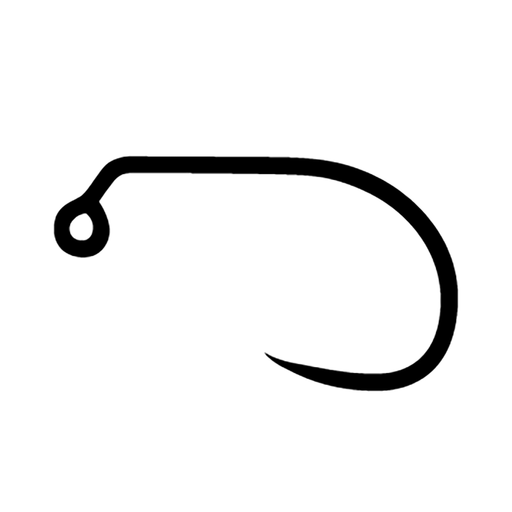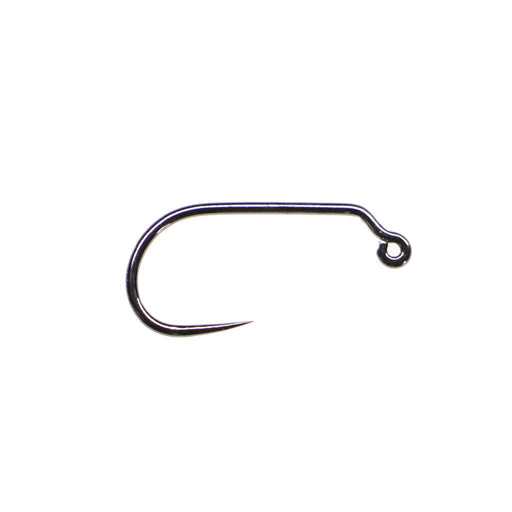
Fly Tying | Hooks
Selecting the right hook is a vital part of tying productive flies. From how a fly swims to the gauge of the wire, shank length, type of fly, etc., the hook plays a huge role. We have a range of premium Hanak and Fulling Mill fly-tying hooks at Tom's Outdoors.
Click here to read more...
Fly hooks consist of several key components, each part plays a crucial role in the hook's performance, influencing its strength, effectiveness, and what style of fly pattern it is suited for.
ANATOMY OF A FLY HOOK
Wire Gauge
Fly hook wire gauge refers to the thickness of the wire used to make the hook, and it plays a crucial role in the performance and application of the fly. Understanding the different wire gauges, from XF (Extra Fine) to XH (Extra Heavy), can help you choose the right hook for your specific fly fishing needs.
Fine gauge hooks are made from very thin wire, designed for delicate presentations and small, lightweight flies. These hooks are ideal for tying dry flies as the thin wire ensures that the hook doesn’t add unnecessary weight. Fine hooks are not as strong as heavier gauges and are best suited for smaller fish or when light tippet is being used.
Standard gauge hooks offer a balance between strength and weight. These hooks are versatile and can be used for a wide range of fly patterns, including nymphs, wet flies, and general-purpose dry flies. The wire is strong enough to handle larger fish while still being thin enough to maintain a natural fly presentation. Standard wire hooks are often the go-to choice for most freshwater fly fishing applications.
Heavy and extra heavy hooks represent the strongest and thickest wire available and are specifically designed for targeting large, aggressive species, or saltwater applications. The thick wire ensures that the hook can handle the immense force exerted by these fish during the fight. Heavy gauge hooks are often used for tying large streamers, saltwater flies, or flies meant for deep-water fishing where the additional weight helps the fly sink quickly.
Hook Gape
The gape of a fly hook is the distance between the shank and the hook point. This measurement is crucial because it determines how effectively the hook will hold a fish. A wider gape provides a larger area for the hook to catch securely in the fish's mouth, which can enhance the hook's holding power and reduce the chances of the fish escaping. The gape size affects the hook’s performance with different fly patterns, influencing both the hook set and the ability to land fish.
Shank Length
Shank length in fly hooks refers to the length of the straight section from the eye to the bend of the hook. Shank lengths can range from extra short (XS) all the way to very long (9XL) hooks. Different shank lengths are designed for various fly patterns and fishing applications.
Short shank hooks are ideal for tying compact, streamlined flies such as small nymphs or midges. These hooks are often used when a minimalistic design is needed, and they are particularly effective for patterns that require a subtle profile. Short shank hooks are useful in situations where you want the fly to closely mimic smaller, natural prey.
Standard shank hooks offer a moderate length that suits a wide range of fly patterns, including standard nymphs, wet flies, and general-purpose dry flies. The standard length provides enough room for creating effective patterns while maintaining a good balance between visibility and presentation.
Long shank hooks are used for larger flies and patterns that require more space, such as large streamers or articulated flies. The extended shank allows for greater flexibility in fly design, making them suitable for patterns that need additional length for weight distribution or action in the water.
Hook Eye
The hook eye is the loop or hole at the top of the fly hook where the tippet or leader is attached, and its style affects how the hook performs. Straight eyes are aligned with the hook shank, making them versatile for a range of fly patterns.
Downturned eyes angle downward, which helps in creating a more streamlined fly profile and is often used for nymphs. Jig-style eyes are designed to keep the hook in an upright position, ideal for jigging flies or patterns that need to maintain a specific orientation in the water.
Upturned eyes angle upward, enhancing the hook's ability to catch and hold fish, and are commonly used for patterns where a higher hook gape is beneficial.
Barbs
Barbed fly hooks feature a small barb near the point that helps keep the hook securely in the fish’s mouth, reducing the chance of losing the catch. Barbless hooks, on the other hand, lack this barb, making them easier to remove and often preferred for catch-and-release fishing, as they cause less harm to the fish and facilitate a quicker release.
Hook Sizes
Hook sizes in fly fishing range from extremely small (#32) to very large (10/0), each suited for different applications.
Smaller hooks are typically used for tying tiny flies such as midges or small dry flies. They are ideal for fishing in clear, calm waters where subtlety and precision are crucial.
Average size hooks are versatile and commonly used for a variety of patterns, including standard nymphs, wet flies, and larger dry flies.
Larger sizes and are used for tying big flies such as large streamers or saltwater patterns. The large size accommodates substantial materials and is strong enough to handle aggressive fish.
Common hook combinations
- Dry Flies (fine wire, short shank, down turned eye, typical size range #18 - #10)
- Terrestrials (fine wire, long shank, down turned eye, typical size range #10 - #6)
- Nymphs (medium to heavy wire, short shank, down turned or jig style eye, typical size range #18 - #10)
- Streamers (medium to heavy wire, long shank, straight or down turned eye, typical size range #10 - #2/0)
- Saltwater (heavy wire, short shank, straight eye, typical size range #1/0 - #10/0)
If you have a particular hook in mind but would appreciate some additional advice. Simply get in touch with our friendly sales team – they’re always up for a chat. You can contact us by calling our Tumut store on (02) 6947 4062 or by email.
Hanak H450 BL Jig Superb - Competition Fly Hooks
HanakThe exceptional innovative design of Hanak Hooks incredibly increases efficiency of strike and landing fish. This effect is reached by using HI Car...
View full detailsFulling Mill Jig Force Black Nickel Barbless Hooks
Fulling MillThe jig hook to rule the rest. The Fulling Mill Jig Force Barbless hook has become one of the river-angling world's preferred hooks. Engineered wit...
View full detailsFulling Mill Super Grub Hooks
Fulling MillThe perfect grub hook for anything through the water column, from midge on the bottom to klink's on top The Fulling Mill Super Grub hook is a very ...
View full detailsFulling Mill All Purpose Hooks - Light
Fulling MillThe most popular dry-fly hook in the range The Fulling Mill all purpose light hook is the most popular dry fly hook in the range, with a standard w...
View full detailsFulling Mill All Purpose Hooks - Medium
Fulling MillA real all-rounder for all flies, on all occasions The Fulling Mill all purpose medium hook is a great compromise between fine wire and strength, ...
View full detailsFulling Mill Streamer Stripper Hooks
Fulling MillBuilt too tame big, tough predators An Ultra 1x Strong and extremely sharp new Streamer Hook, ideal for a variety of Streamer patterns. Teflon coa...
View full detailsFulling Mill Traditional Streamer Hooks
Fulling MillPerfect for muddlers, buggers or any classic streamer pattern The Fulling Mill Traditional Streamer hook has been designed for large fly patterns w...
View full details







